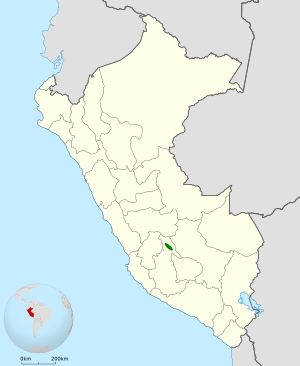Ayacucho antpitta facts for kids
Quick facts for kids Ayacucho antpitta |
|
|---|---|
| Scientific classification | |
| Genus: |
Grallaria
|
| Species: |
ayacuchensis
|
 |
|
The Ayacucho antpitta (Grallaria ayacuchensis) is a special type of bird. It belongs to the Grallaridae family. This bird is found only in one place: the Ayacucho region of Peru. This means it is an endemic species.
Scientists used to think the Ayacucho antpitta was just a group of chestnut antpittas. But in 2020, a team of scientists described it as a brand new species. These scientists were Peter A. Hosner, Mark B. Robbins, Morton L. Isler, and R. Terry Chesser.
Discovering the Ayacucho Antpitta
Scientists decided the Ayacucho antpitta was a new species for a few reasons. They looked at its plumage, which is the pattern and color of its feathers. They also listened carefully to its songs and calls. These were different enough from other antpittas to make it a unique species.
Before 2020, birds in this area were thought to be G. blakei. That's the scientific name for the Chestnut antpitta.
The name "Ayacucho antpitta" comes from the place where it lives. The scientific name, ayacuchensis, also comes from the department of Ayacucho. This region in Peru is the only place where this bird can be found.
Where the Ayacucho Antpitta Lives
The Ayacucho antpitta lives only on the eastern side of the Andes mountains in Peru. Specifically, it is found in the department of Ayacucho. It might also be seen in parts of the nearby Huancavelica region.
These birds live high up in the mountains. You can find them at elevations between 2,500 and 3,700 meters (about 8,200 to 12,100 feet). They prefer to live in humid montane forests. These are forests found in mountainous areas.
The Ayacucho antpitta spends its time in the lower parts of the forest. It likes to stay in the understory (the plants below the main tree canopy) and on the forest floor.
Natural barriers like rivers help keep different antpitta species apart. The Mantaro River separates the Ayacucho antpitta from the closely related Oxapampa antpitta. The Apurímac River separates it from the Urubamba antpitta.
See also
 In Spanish: Tororoí de Ayacucho para niños
In Spanish: Tororoí de Ayacucho para niños

